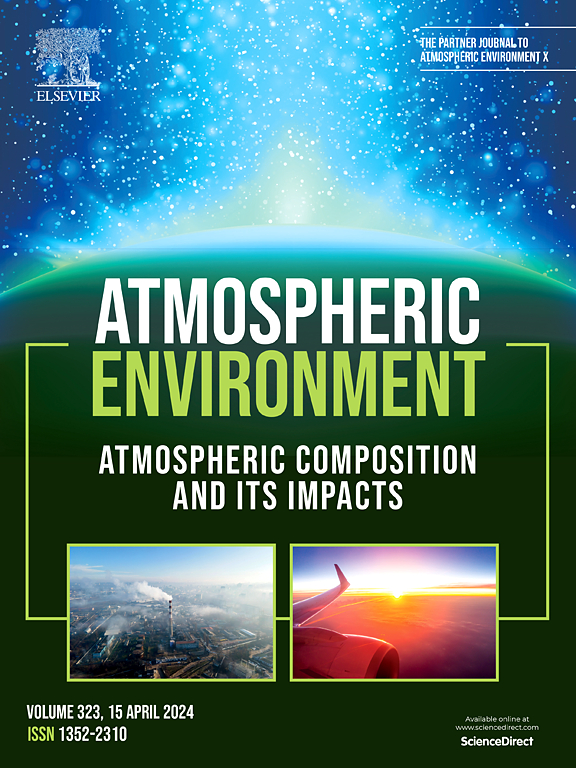利用综合时间依赖性和气象特征的混合深度学习模型预测元素碳和有机碳
IF 3.7
2区 环境科学与生态学
Q2 ENVIRONMENTAL SCIENCES
引用次数: 0
摘要
元素碳(EC)和有机碳(OC)是PM2.5的重要组成部分,对空气质量和公众健康具有重大影响。传统的预测模型往往无法捕捉到EC和OC的非线性动态,特别是在交通和工业排放高的城市环境中。本研究通过提出一种新的混合深度学习模型来解决这一差距,该模型将双向长短期记忆(BiLSTM)网络与注意机制集成在一起,以考虑时间依赖性、气象因素和共污染物(PM2.5、O3)。利用常熟市的综合空气质量和气象数据,我们确定了EC和OC在交通排放、天气条件和二次气溶胶形成的驱动下的不同日和季节模式。该模型显著优于传统方法,对EC和OC浓度均具有较高的预测精度。关键的创新包括整合关注机制以确定关键时间步骤的优先级,以及将气象特征和共污染物结合起来,从而增强了模型捕捉复杂污染物相互作用的能力。结果表明,该模型在实时空气质量预测中的稳健性,为城市规划和污染缓解策略提供了可行的见解。这项研究通过提供一个可扩展和准确的工具来预测动态城市环境中的EC和OC,从而为该领域做出贡献,最终支持改善公共卫生和可持续城市发展的努力。本文章由计算机程序翻译,如有差异,请以英文原文为准。

Prediction of elemental carbon and organic carbon using a hybrid deep learning model integrated temporal dependencies and meteorological features
Elemental Carbon (EC) and Organic Carbon (OC) are critical components of PM2.5, with significant implications for air quality and public health. Traditional prediction models often fail to capture the non-linear dynamics of EC and OC, particularly in urban environments with high traffic and industrial emissions. This study addresses this gap by proposing a novel hybrid deep learning model that integrates Bidirectional Long Short-Term Memory (BiLSTM) networks with attention mechanisms to account for temporal dependencies, meteorological factors, and co-pollutants (PM2.5, O3). Using comprehensive air quality and meteorological data from Changshu City, we identify distinct diurnal and seasonal patterns of EC and OC, driven by traffic emissions, weather conditions, and secondary aerosol formation. The proposed model significantly outperforms traditional methods, achieving high prediction accuracy for both EC and OC concentrations. Key innovations include the integration of attention mechanisms to prioritize critical time steps and the incorporation of meteorological features and co-pollutants, which enhance the model's ability to capture complex pollutant interactions. The results demonstrate the model's robustness in real-time air quality forecasting, providing actionable insights for urban planning and pollution mitigation strategies. This research contributes to the field by offering a scalable and accurate tool for predicting EC and OC in dynamic urban environments, ultimately supporting efforts to improve public health and sustainable urban development.
求助全文
通过发布文献求助,成功后即可免费获取论文全文。
去求助
来源期刊

Atmospheric Environment
环境科学-环境科学
CiteScore
9.40
自引率
8.00%
发文量
458
审稿时长
53 days
期刊介绍:
Atmospheric Environment has an open access mirror journal Atmospheric Environment: X, sharing the same aims and scope, editorial team, submission system and rigorous peer review.
Atmospheric Environment is the international journal for scientists in different disciplines related to atmospheric composition and its impacts. The journal publishes scientific articles with atmospheric relevance of emissions and depositions of gaseous and particulate compounds, chemical processes and physical effects in the atmosphere, as well as impacts of the changing atmospheric composition on human health, air quality, climate change, and ecosystems.
 求助内容:
求助内容: 应助结果提醒方式:
应助结果提醒方式:


